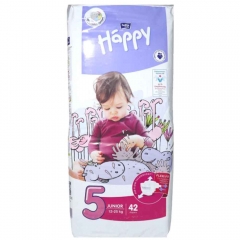-
 Thanh toán đa dạng, linh hoạtChuyển khoản ngân hàng, thanh toán tại nhà...
Thanh toán đa dạng, linh hoạtChuyển khoản ngân hàng, thanh toán tại nhà... -
 Miễn Phí vận chuyển 53 tỉnh thànhMiễn phí vận chuyển đối với đơn hàng trên 1 triệu
Miễn Phí vận chuyển 53 tỉnh thànhMiễn phí vận chuyển đối với đơn hàng trên 1 triệu -
 Yên Tâm mua sắmHoàn tiền trong vòng 7 ngày...
Yên Tâm mua sắmHoàn tiền trong vòng 7 ngày...
The 5 Languages of Appreciation in the Workplace: Empowering Organizations by Encouraging People
-

- Mã sản phẩm: 080246176X
- (816 nhận xét)

- Publisher:Northfield Publishing; New edition (September 1, 2012)
- Language:English
- Paperback:224 pages
- ISBN-10:080246176X
- ISBN-13:978-0802461766
- Item Weight:9.6 ounces
- Dimensions:8.5 x 5 x 0.42 inches
- Best Sellers Rank:#168,389 in Books (See Top 100 in Books) #469 in Workplace Culture (Books) #481 in Human Resources & Personnel Management (Books) #2,506 in Leadership & Motivation
- Customer Reviews:4.5 out of 5 stars 816Reviews

Mô tả sản phẩm
About the Author
GARY CHAPMAN--author, speaker, counselor--has a passion for people and for helping them form lasting relationships. He is the #1 bestselling author of The 5 Love Languages series and director of Marriage and Family Life Consultants, Inc. Gary travels the world presenting seminars, and his radio programs air on more than 400 stations. For more information visit his website at www.5lovelanguages.com.
PAUL WHITE, PhD, is a psychologist, author, and speaker who "makes work relationships work." He has consulted with a wide variety of organizations, including Microsoft, the US Air Force, the Million Dollar Round Table, and Princeton University. He and Gary Chapman coauthored The 5 Languages of Appreciation in the Workplace.
Product Description
Based on the #1 New York Times bestseller The 5 Love Languages®(over 12 million copies sold),
Dramatically improve workplace relationships simply by learning your coworkers’ language of appreciation.
This book will give you the tools to improve staff morale, create a more positive workplace, and increase employee engagement. How? By teaching you to effectively communicate authentic appreciation and encouragement to employees, co-workers, and leaders. Most relational problems in organizations flow from this question: do people feel appreciated? This book will help you answer “Yes!”
A bestseller—having sold over 300,000 copies and translated into 16 languages—this book has proven to be effective and valuable in diverse settings. Its principles about human behavior have helped businesses, non-profits, hospitals, schools, government agencies, and organizations with remote workers.
PLUS! Each book contains a free access code for taking the online Motivating By Appreciation (MBA) Inventory (does not apply to purchases of used books). The assessment identifies a person’s preferred languages of appreciation to help you apply the book. When supervisors and colleagues understand their coworkers’ primary and secondary languages, as well as the specific actions they desire, they can effectively communicate authentic appreciation, thus creating healthy work relationships and raising the level of performance across an entire team or organization.
Take your team to the next level by applying The 5 Languages of Appreciation in the Workplace.
Review
"I loved this book so much that I gave a copy to several co-workers. The 5 Languages of Appreciation in the Workplace helped me to understand the most appropriate ways to show affirmation and give positive feedback to co-workers and volunteers in ways that speak to them based on their primary "Appreciation Language." Great team building exercise to do with department staff, managerial teams, or executive teams." Reviewed by Sue D, Net Galley, May 16, 2014, Rated 5 of 5 stars.
Review
PRAISE F OR THE 5 LANG UAGES OF APPRECIATION IN THE W ORKPLACE
After twenty years of coaching leaders at all levels, and educating thousands of professional
coaches around the world, I believe there are two universal things that ignite excellence
within people: recognition of their uniqueness and acknowledgement that they matter. The 5
Languages of Appreciation in the Workplace gives individuals, teams, and entire organizations
an invaluable resource to do just that by making appreciation a foundational part of
their culture.
AMY RUPPERT, Master Certified Coach; CEO, The Integreship Group; Past National
President, the International Coaching Federation
Good leaders are known for their technical skills. Great leaders are known and remembered
for how they make people feel. The 5 Languages of Appreciation in the Workplace is a must-have
resource for any leader who wants to move the bar from being a good leader to a great leader.
KAREN ALBER, Founding Partner, The Integreship Group; Former Chief Information
Officer, HJ Heinz
The 5 Languages of Appreciation in the Workplace has helped change the way managers around
the world think about appreciation in the workplace. New research on the positive benefits
to organizations when employees feel valued and appreciated for their contributions, generational
differences, the special needs of remote employees, and peer-to-peer appreciation,
are welcomed additions to a book that has already become a management classic. This book
will be equally valuable to those who are at the start of their burgeoning management careers
as it will be to seasoned managers by providing practical tips on how to engage the increasingly
diverse workforce with relevant and relatable solutions.
PETER HART, President & CEO, Rideau, Inc.; Director, Advisory Board, Wharton
Center for Human Resources, University of Pennsylvania
The 5 Languages of Appreciation in the Workplace has been a pivotal resource helping our
employees and culture grow and mature. It is amazing to see how trust grows when care and
appreciation are shown, as the correct language of appreciation for each employee is utilized.
The insights found in this book are applicable to all generations and skill sets: introverts to
extroverts, technical to relational abilities—all have been able to apply these principles for
meaningful growth.
EVAN WILSON, Chief Experience Officer, Meritrust Credit Union
There is a continual cry for authenticity in our workplaces and communities. This updated
version of The 5 Languages of Appreciation in the Workplace brings a deeper understanding
of HOW to be authentic in expressing individual value in a variety of circumstances. The
business case for adopting The 5 Languages of Appreciation is stronger than ever, and this
new edition provides the research foundation for the return on investment to organizations
when they commit to building a strong, positive workplace culture, one coworker at a time!
DAN AGNE, Owner and Principal Consultant, The Agne Group; Director of Sales
Effectiveness, The Brooks Group; Associate Pastor, Open Bible Christian Church,
Dayton, Ohio
I greatly appreciate this second edition of The 5 Languages of Appreciation in the Workplace.
White and Chapman have done an exceptional job of mixing statistics with stories and infusing
research into relevancy. They give readers a nuanced approach to appreciating others
at work that will enhance leaders’ and colleagues’ appreciation-literacy skills in being able to
draw out the best in others at work (and home).
DAVID ZINGER, Founder, The Global Employee Experience & Engagement Network;
Coauthor, People Artists: Drawing Out the Best in Others at Work
Drs. Chapman and White’s perspective about the reality of managers’ lives is spot on.
Managers don’t have capacity to give as much appreciation as the human spirit of their direct
reports craves, in most cases. “It takes a village to raise a child” applies just as much to nurturing
the fundamental needs of all human beings to be understood, valued, and appreciated.
We all live, to some degree, in a “village” community and the principles in The 5 Languages of
Appreciation in the Workplace make it much easier to do what most people intuitively want
to give and receive.
TIM MYERS, Materials Lab Manager-Metallography, Honeywell, Inc.
Appreciation isn’t just a manager issue; it is a coworker issue. It is an employee appreciating
their leader issue, and a vendor to employee issue—the list goes on and on. In The 5 Languages
of Appreciation in the Workplace, Drs. Chapman and White give us the vision to create a culture
with everyone valuing and appreciating one another no matter the role they have in the
organization.
TIFFANY SNIPES, Learning & Development Consultant, BJC Institute for Learning and
Development
As a longtime user of the 5 Languages approach, I was excited to see the new material that has
been added to highlight the proven financial benefits of appreciation, working with remote
and virtual teams, appreciation across generations, and making a strong case for the overall
increase in employee engagement. We continue to offer training on The 5 Languages of
Appreciation in the Workplace as a valuable tool to our member companies. We have found
that when team members learn what others actually value in regards to showing appreciation
to each other, areas like team morale, cohesiveness, unity, and especially productivity
increase, and drama decreases.
DAVE TIPPETT, Director, On Site Learning and Consulting, The Employers’ Association
Understanding The 5 Languages of Appreciation in the Workplace has been critical to our success
in building a strong team and maintaining a positive culture. I aspire daily to demonstrate
authentic appreciation toward my team members, peers, and leadership team. The focus on
appreciation has increased employee engagement and strengthened our team dynamic.
MICHELLE SUTTER, Director of Sales, Holland America Line
Working with Dr. White brought to light the importance of building a sustainable appreciation
culture. Through his workshops and personalized recognition tools, we are starting to
see improved team dynamics and our appreciation communication shifting in the direction
of tomorrow. While it didn’t come naturally at first, we are learning to recognize each other’s
language of appreciation and it is making a big difference.
JOANNA ZIARNIK, Research & Innovation, L’Oreal USA
From the Back Cover
Is appreciation communicated regularly at your workplace?
Do you truly feel valued by those with whom you work?
If you express appreciation in ways that aren’t meaningful to your co-workers, they may not feel valued at all. The problem is you’re speaking different languages. In The 5 Languages of Appreciation in the Workplace, Dr. Gary Chapman and Dr. Paul White will help you:
o Express genuine appreciation to co-workers and staff – even on a tight budget.
o Increase loyalty with the employees and volunteers in your organization.
o Reduce cynicism and create a more positive work environment.
o Improve your ability to show appreciation for difficult colleagues.
o Individualize your expressions of appreciation by speaking the right language
o Convey the language of physical touch in appropriate ways.
Based on the #1 New York Times bestseller, The 5 Love Languages®, Dr. Chapman and Dr. White give you practical steps to make any workplace environment more encouraging and productive. Before you know it, you will learn to speak and understand the unique languages of appreciation and feel truly valued in return.
Praise for The 5 Languages of Appreciation in the Workplace
I have really worked hard for many years to appreciate my co-workers scattered across the USA. However, this simple process and tool has put me light years ahead. It will greatly help your relationships and productivity as a leader.”
Kent Humphreys, Chairman, American Health Partners
This book addresses not just the need for the life-giving appreciation we all need, but takes us through the process of discovering what that looks like for ourselves and for those with whom we work. Everyone who reads this book will without doubt be better equipped to create an atmosphere of appreciation in their sphere of influence wherever that is.
Lynne Smith, Director of Leadership Development, Next LEVEL Leadership Canada
Trusting relationships are the glue that holds commerce together. They are more important than skills or knowledge. This book shows how to build trust on a personal level in the workplace and its principles apply for a wide variety of organizations.
Tom Nicholson, Executive Director, HR People & Strategy
- Mua astaxanthin uống có tốt không? Mua ở đâu? 29/10/2018
- Saffron (nhụy hoa nghệ tây) uống như thế nào cho hợp lý? 29/09/2018
- Saffron (nghệ tây) làm đẹp như thế nào? 28/09/2018
- Giải đáp những thắc mắc về viên uống sinh lý Fuji Sumo 14/09/2018
- Công dụng tuyệt vời từ tinh chất tỏi với sức khỏe 12/09/2018
- Mua collagen 82X chính hãng ở đâu? 26/07/2018
- NueGlow mua ở đâu giá chính hãng bao nhiêu? 04/07/2018
- Fucoidan Chính hãng Nhật Bản giá bao nhiêu? 18/05/2018
- Top 5 loại thuốc trị sẹo tốt nhất, hiệu quả với cả sẹo lâu năm 20/03/2018
- Footer chi tiết bài viết 09/03/2018
- Mã vạch không thể phân biệt hàng chính hãng hay hàng giả 10/05/2023
- Thuốc trắng da Ivory Caps chính hãng giá bao nhiêu? Mua ở đâu? 08/12/2022
- Nên thoa kem trắng da body vào lúc nào để đạt hiệu quả cao? 07/12/2022
- Tiêm trắng da toàn thân giá bao nhiêu? Có an toàn không? 06/12/2022
- Top 3 kem dưỡng trắng da được ưa chuộng nhất hiện nay 05/12/2022
- Uống vitamin C có trắng da không? Nên uống như thế nào? 03/12/2022
- [email protected]
- Hotline: 0909977247
- Hotline: 0908897041
- 8h - 17h Từ Thứ 2 - Thứ 7
Đăng ký nhận thông tin qua email để nhận được hàng triệu ưu đãi từ Muathuoctot.com
Tạp chí sức khỏe làm đẹp, Kem chống nắng nào tốt nhất hiện nay Thuoc giam can an toan hiện nay, thuoc collagen, thuoc Dong trung ha thao , thuoc giam can LIC, thuoc shark cartilage thuoc collagen youtheory dau ca omega 3 tot nhat, dong trung ha thao aloha cua my, kem tri seo hieu qua, C ollagen shiseido enriched, và collagen shiseido dạng viên , Collagen de happy ngăn chặn quá trình lão hóa, mua hang tren thuoc virility pills vp-rx tri roi loan cuong duong, vitamin e 400, dieu tri bang thuoc fucoidan, kem chống nhăn vùng mắt, dịch vụ giao hang nhanh nội thành, crest 3d white, fine pure collagen, nên mua collagen shiseido ở đâu, làm sáng mắt, dịch vụ cho thue kho lẻ tại tphcm, thực phẩm tăng cường sinh lý nam, thuoc prenatal bổ sung dinh dưỡng, kem đánh răng crest 3d white, hỗ trợ điều trị tim mạch, thuốc trắng da hiệu quả giúp phục hồi da. thuốc mọc tóc biotin























 KHUYẾN MÃI LỚN
KHUYẾN MÃI LỚN Hỗ Trợ Xương Khớp
Hỗ Trợ Xương Khớp Bổ Não & Tăng cường Trí Nhớ
Bổ Não & Tăng cường Trí Nhớ Bổ Sung Collagen & Làm Đẹp
Bổ Sung Collagen & Làm Đẹp Bổ Thận, Mát Gan & Giải Độc
Bổ Thận, Mát Gan & Giải Độc Chăm Sóc Sức khỏe Nam Giới
Chăm Sóc Sức khỏe Nam Giới Chăm Sóc Sức khỏe Nữ Giới
Chăm Sóc Sức khỏe Nữ Giới Chăm sóc Sức khỏe Trẻ Em
Chăm sóc Sức khỏe Trẻ Em Thực Phẩm Giảm Cân, Ăn Kiêng
Thực Phẩm Giảm Cân, Ăn Kiêng Bổ Sung Vitamin & Khoáng Chất
Bổ Sung Vitamin & Khoáng Chất Bổ Tim Mạch, Huyết Áp & Mỡ Máu
Bổ Tim Mạch, Huyết Áp & Mỡ Máu Bổ Mắt & Tăng cường Thị lực
Bổ Mắt & Tăng cường Thị lực Điều Trị Tai Mũi Họng
Điều Trị Tai Mũi Họng Sức Khỏe Hệ Tiêu hóa
Sức Khỏe Hệ Tiêu hóa Chăm Sóc Răng Miệng
Chăm Sóc Răng Miệng Chống Oxy Hóa & Tảo Biển.
Chống Oxy Hóa & Tảo Biển.